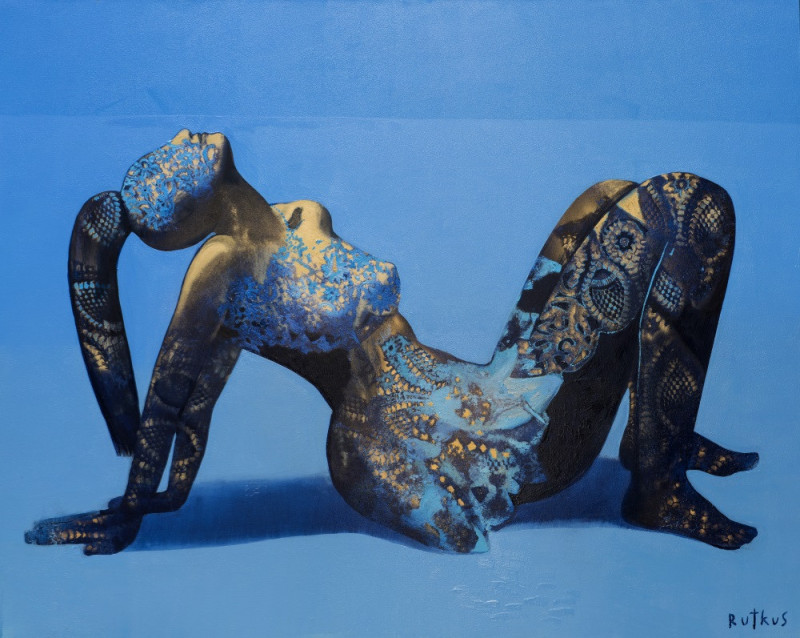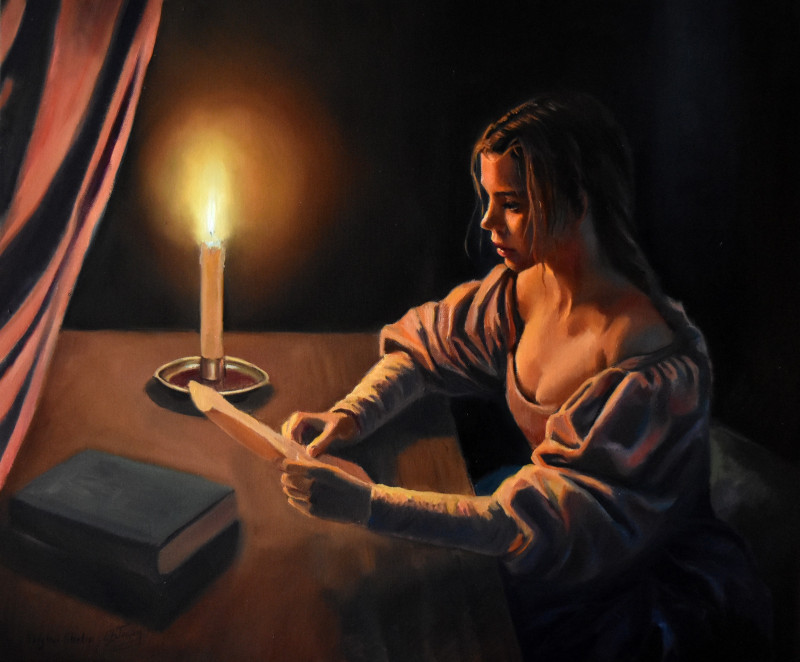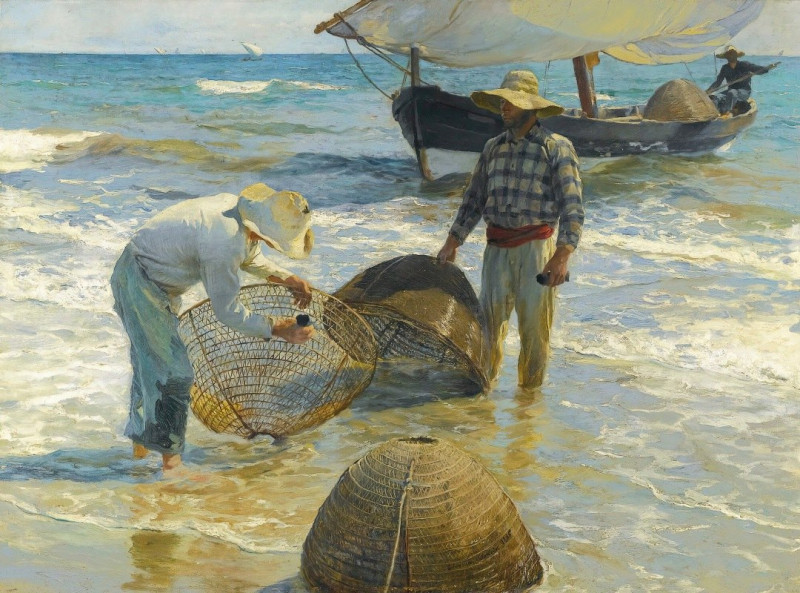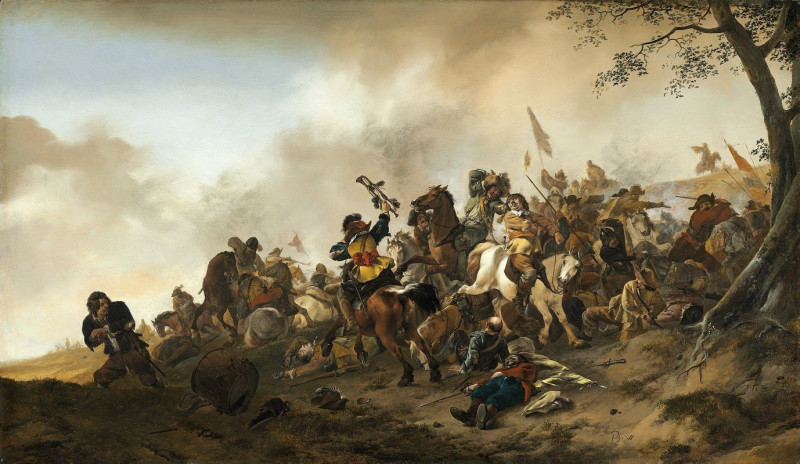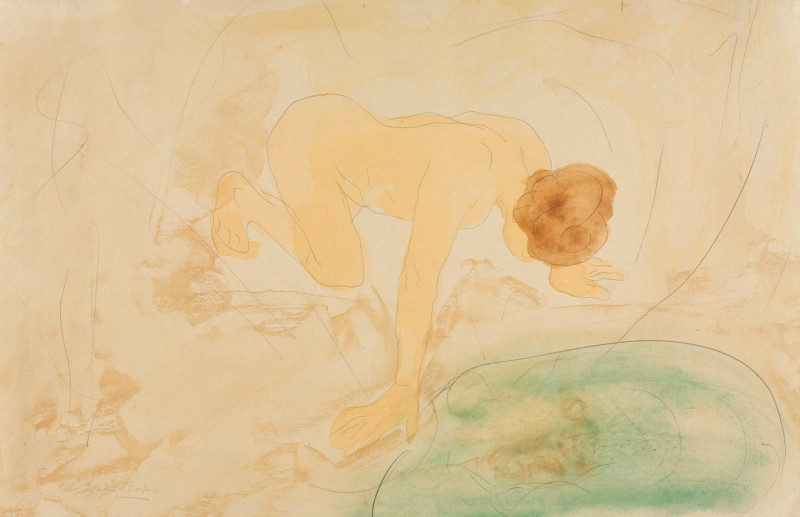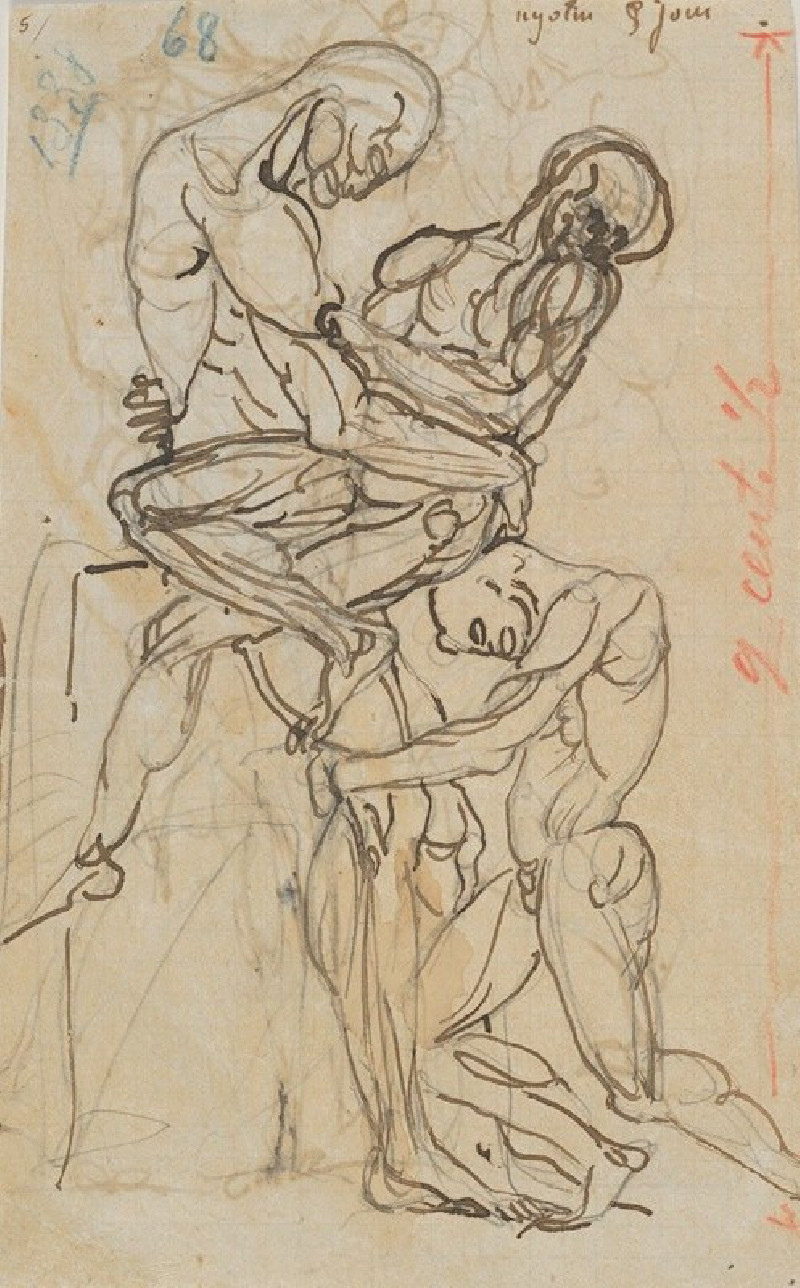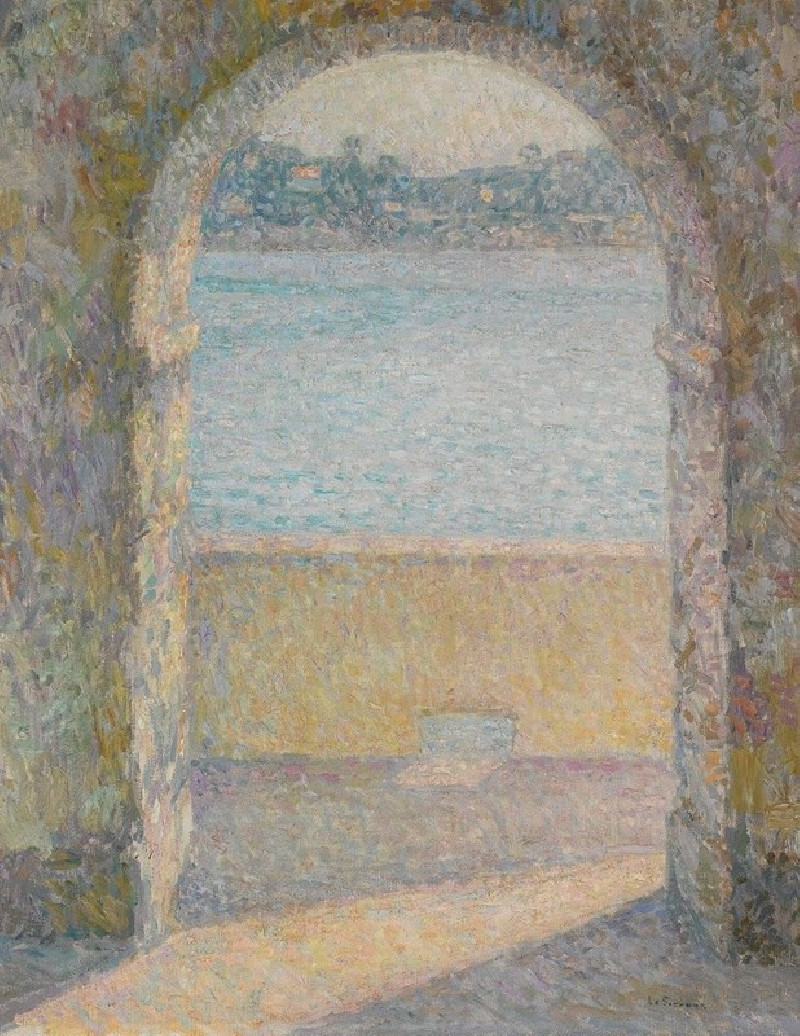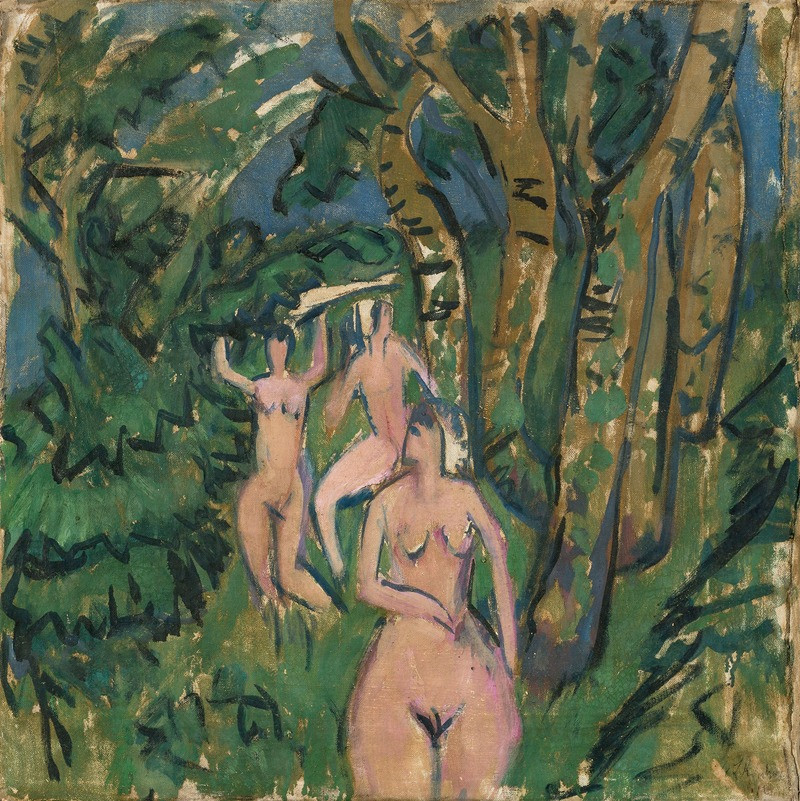Die Entscheidung (1926)
Technique: Giclée quality print
Recommended by our customers
More about this artwork
Ernst Ludwig Kirchner's evocative woodcut, "Die Entscheidung" (1926), is a compelling example of the Expressionist movement, where stark contrasts and emotional intensity dominate the aesthetic. The art piece features three distinct figures set against a backdrop of bold, black lines and simplified forms, characteristic of Kirchner's style which aims to express raw emotional experience rather than physical reality.At the center of the composition stands a nude female figure, her form simplified yet striking, drawing the viewer's eye with her prominent positioning. She is flanked on one side by a cloaked figure whose face bears a grim expression and on the other side by a scene of an intimate embrace between two other individuals. The interaction between these figures could be interpreted as a narrative of conflict, choice, or moral dilemma, possibly reflecting the personal tumults and societal challenges of the era.The dramatic use of black and white enhances the emotional pitch of the scene, creating a visual tension that mirrors the thematic crux of decision-making. Kirchner's prowess in woodcut technique is evident through the textural details and the rhythmic patterns of the composition which guide the viewer’s eye across the tableau."Die Entscheidung" stands not just as a visual statement but as a resonant psychological exploration, making it a masterpiece worthy of contemplation and discussion.
Delivery
Returns
Ernst Ludwig Kirchner (1880–1938) was one of the most important German Expressionist painters. He was a co-founder of Die Brücke, a group of German expressionist artists formed in Dresden in 1905. Die Brücke and Kirchner took inspiration from Vincent Van Gogh and Edvard Munch, as well as African and Oceanic art. They used woodblock printing as a medium to showcase their signature style: flat, unrealistic images with vivid colors. The recurring themes in Kirchner's artworks included exotic cultures, faraway landscapes, self-portraits, dancers and Berlin street life. His paintings and prints effectively portrayed non-European cultures despite the fact that he never traveled outside of Europe.


































